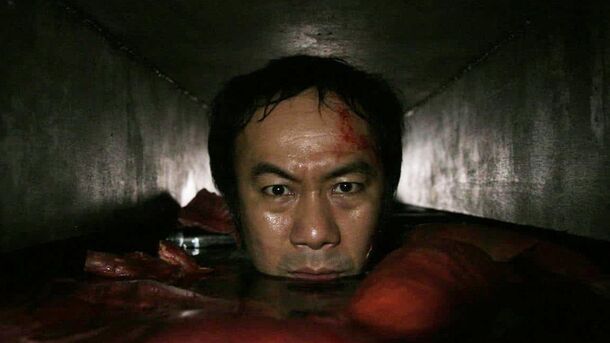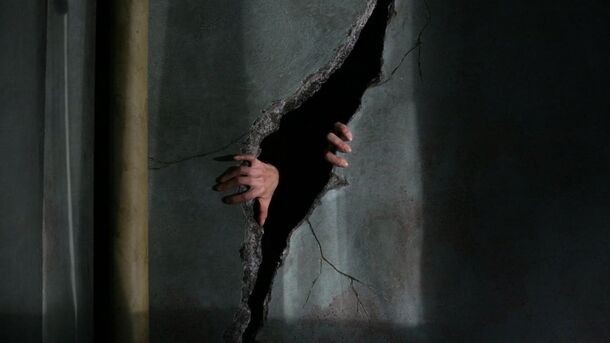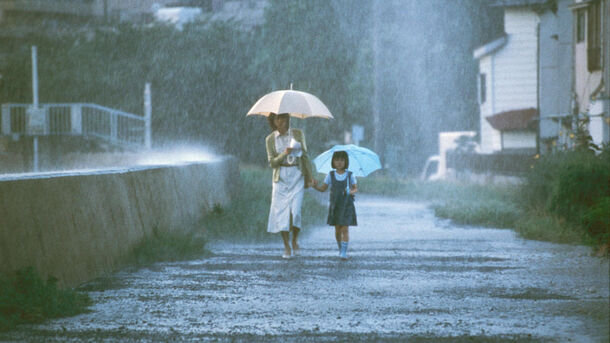9 Most Gruesome Japanese Horrors That Make Hollywood Look Like a Kids’ Show

If you want a proper scare, look no further than j-horrors.
As a film genre, Japanese horror emerged relatively late, in the 1960s, but immediately became a cultural phenomenon.
These nine films not only influenced J-horror, but also the development of the genre in other countries, and simply scared the whole world.
1. Pulse, 2001
Student Ryosuke Kawashima stumbles upon a website that asks if he wants to see ghosts and then shows strange images of people frozen in front of the monitor. Ryosuke's co-worker and programmer Michi Kudo commits suicide for no apparent reason.
At the same time, related events begin to occur in the lives of several strangers – their loved ones disappear, and the few who remain speak of ghosts that have infiltrated the real world.
2. Cure, 1997
One of the forerunners of the phenomenon that influenced all modern horror slow-burners and A24 films was Kiyoshi Kurosawa and his Cure.
.jpg)
Detective Takabe investigates a series of mysterious deaths: several people have been killed under similar circumstances using the same method – the killers carve the letter X into the victim's body. The criminals are not trying to hide from justice, but they cannot explain the motives for their actions.
The detective becomes more and more involved in a series of inexplicable events and becomes convinced of the involvement of Kunio, a young man who has completely lost his memory.
3. Audition, 1999
One of Tarantino's favorite films, which horror masters Eli Roth and Rob Zombie are afraid to watch. Audition is an adaptation of the novel of the same name by Ryu Murakami and the first brilliant work in the horror genre by director Takashi Miike.
.jpg)
Shigeharu Aoyama, a middle-aged widower, decides to look for a new wife. Together with a producer friend, they set up fake auditions in which Aoyama's wishes for the role of his wife are listed.
After the auditions, Aoyama falls in love with one of the candidates, even though his friend warns him about the woman because not a single position in her resume has been confirmed and her music agent is listed as missing. But Aoyama ignores his friend's advice and starts a relationship with the mysterious Asami.
4. Cold Fish, 2010
.jpg)
Nobuyuki Shamoto is a modest man, running a small fish shop and raising his teenage daughter, Mitsuko. Nobuyuki's well-established life is almost thrown into unexpected trouble when Mitsuko is caught and accused of shoplifting. Fortunately, a friendly old customer named Yukio Murata convinces the store owner not to call the police.
But there is one thing – the friendly old man turns out not to be what he seems at first glance. Yukio also runs a fish shop, much bigger than Nobuyuki's. He convinces Mitsuko to work in his shop as an assistant. At first Yukio seems to be a noble businessman, but soon he starts to arouse Nobuyuki's suspicions.
5. Kwaidan, 1964
.jpg)
Kwaidan is a journey through Japanese horror culture in anthology format. The word "kwaidan" refers to horror stories – a folklore genre that originated in Japan during the Edo period.
The traditional plot of kwaidan is based on the interaction of the real and supernatural worlds. The main antagonists of these stories were: yokai – demons, yurei – ghosts, and onryo – vengeful female spirits.
The movie is divided into four stories based on Japanese fairy tales. The first tells the story of a samurai who leaves his young wife for another and then returns to a ghost. The second is about the spirit of winter, family values, and broken promises.
The third is about how a famous blind musician lost his ears. The fourth is the most mysterious, about the points of contact between the fictional and real worlds.
6. Haze, 2005

A man wakes up in a cramped concrete labyrinth, suffering from abdominal pain and bleeding. All his attempts to get out are unsuccessful, and all he sees are images of suffering waiting for him around every corner.
Having lost his strength, he stops trying to free himself and indulges in memories, but they cannot tell him how he ended up here. With a last effort, he forces himself to look for a way to freedom again and finds a woman who, like him, does not remember how she got here.
7. Retribution, 2006

A series of murders occur around police detective Yoshioka. Yoshioka, whose duty it is to investigate and arrest the killers, begins to be overcome by a strange feeling: it seems to him that he is the killer. He finds some evidence of his involvement in the murders, but what frightens him most is his severe memory problems: he cannot be sure of his innocence.
One of his colleagues, Detective Miyaji, torn between duty and friendship, begins to suspect the detective. Yoshioka himself turns to a psychotherapist, but the fog in his head refuses to go away.
8. Dark Water, 2002

After a divorce, Yoshimi and her daughter Ikuko move out of her ex-husband's house. On the ceiling of the only apartment the unemployed Yoshimi can afford, she discovers a strange puddle. To find the source, she goes up one floor and discovers a completely flooded apartment and a silent little inhabitant in it.
At the same time, her daughter Ikuko finds a bag of toys on the roof. Later, Yoshimi recognizes the girl from the top floor on a photo in an ad about the missing little girl – she disappeared some years ago and used to live right above Yoshimi's apartment.
9. Ju-on: The Grudge, 2002
.jpg)
Once you have seen The Grudge by Takashi Shimizu, you will never forget it. The movie does not build up, does not prepare you for the horror. The ghosts here do not hide in dark corners, but acquire flesh and body, appear in close-up, forcing the viewer to take a good look at them.
One house in Tokyo is no different from the neighboring buildings. Only anyone who enters it will face a terrible death. Once, such monstrous events took place there that all the participants could not cope with the horror and were stuck in the house in the form of bloodthirsty ghosts. Anyone who is interested in the fate of the house and its inhabitants will suffer the same fate.